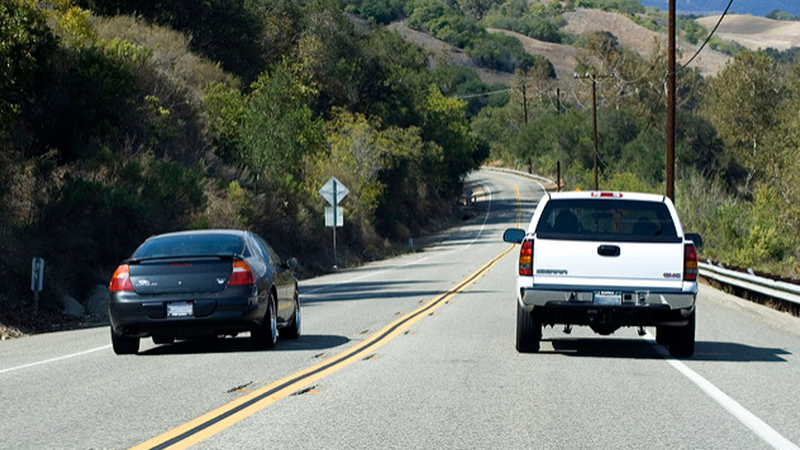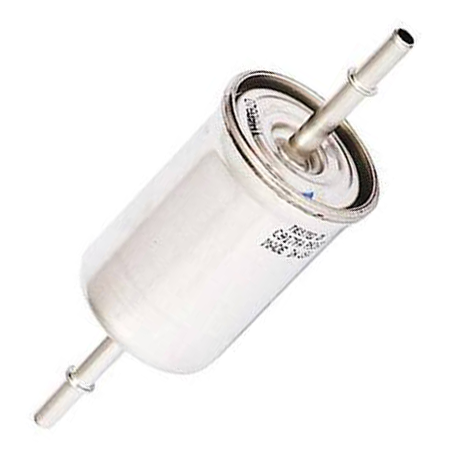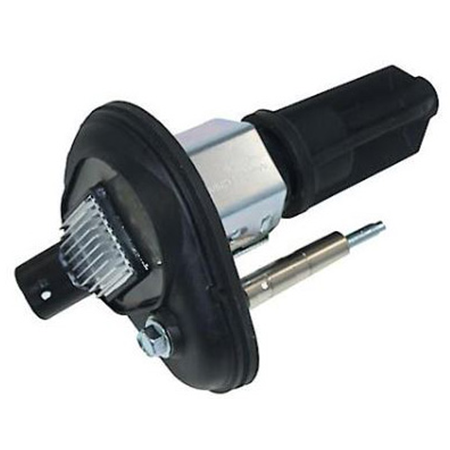So you step on the gas, and your car's engine responds sluggishly. It's no longer eager to get you down the road faster — instead, it's just not picking up like it used to.
Source | wanderingnome | Flikr
At one time, this would have meant just changing the spark plugs and wires, tweaking the carburetor a little bit and maybe changing the distributor cap and rotor — the tune-up that cars required every 35k miles or so. Today, there are all kinds of potential causes for when your car hesitates when accelerating. Let's go through them, starting with the simplest ones first (the type you should always do for any diagnosis). These are all things that might not even register a trouble code and illuminate your Check Engine Light (CEL):
1. Clogged fuel filter
This one's kind of a no-brainer. The fuel filter can be externally mounted, located in the fuel tank or even both. The fuel filter traps particulates before they can make their way into the fuel system and the engine. A dirty fuel filter will result in erratic performance, random sputtering and surging, and will eventually prevent the vehicle from running. If you have an external fuel filter, start with replacing it, especially if it hasn't been done in a while. It is usually a cheap and easy repair.
2. Air filter
This is the easiest one, of course. If your air filter's so dirty that the engine can't breathe properly, the mass air flow (MAF) sensor and computer can adjust to compensate — up to a point. Past that point, performance and fuel economy are going to suffer. Pop open that air filter box, have a look at that filter and drop a new one in.
3. Stuck brakes
This may not be the most common cause of poor acceleration, but it does happen. A dragging brake can be enough to really impede performance and road manners. After a drive, do any of the wheels feel hotter to the touch than others? You can pin this down even better with an infrared sensor gun.
4. Clogged catalytic converter
Don't rule it out. If the catalytic converter is failing to a point where it's restricting exhaust flow, you can bet you'll have power and drivability problems, and it may or may not result in a trouble code and CEL.
A clogged catalytic converter is often the result of another problem, such as unburned oil or fuel. Be sure to correct those issues first so that you don't end up with a second failed cat.
Now, as for some of the problems that might result in a trouble code:
5. Failed MAF sensor
After the air filter, the mass air flow sensor (MAF) is a next logical place to look. The MAF sensor is right in the inlet stream for the air filter and informs the computer of the volume of air entering the engine. The MAF can become dirty or can fail altogether, in which case it might register a trouble code and illuminate the Check Engine lamp (CEL). In a case like this, P0101 is the typical trouble code for a MAF sensor.
6. O2 sensor
The oxygen sensor, or O2 sensor, is located in the exhaust stream (usually one near the manifold and one near the muffler or catalytic converter) and is a critical part of your car's emission controls. The O2 sensor monitors the content of gases that make their way through the exhaust and send information back to the engine control computer, which then uses those readings to make adjustments in fuel metering. On many vehicles, the O2 sensor has a service life of 60-70k miles. A fouled or worn O2 sensor can register a variety of trouble codes, illuminating the CEL, and will cause a rich-running condition with black exhaust smoke, poor fuel economy, heightened emissions and poor acceleration.
Source | Bosch Video
Some malfunctions can cause your vehicle to enter "limp mode", which means you won't be able to accelerate beyond around 25-30 mph. This is a protective measure your vehicle takes to prevent catastrophic damage. If you suspect your vehicle is in limp mode, you should have it towed to a repair facility for diagnosis.
7. Failed TPS
The throttle position sensor (TPS) informs the engine computer of the status of the throttle in real time, as determined by the accelerator pedal. When the TPS is malfunctioning, the computer has no way of "knowing" the position of the accelerator or throttle body, The result can be weird, wonky drivability characteristics and poor acceleration.
Source / BWD Video
8. Failing coil-on-plug packs
Beginning in the 90s, most vehicles dispensed with having a mechanical distributor, ignition coil and plug wires. Instead, spark delivery and timing is managed by the engine computer, and each spark plug has its own miniature coil to supply ignition voltage. Failing COP packs will register a trouble code (such as P0354) and can result in a miss or surging. The good news is that coil packs are pretty inexpensive and easy to replace on many engines.
There are many reasons why your vehicle might be experiencing reduced engine power, but this should be a good start on diagnosis. And if it's been more than 70k miles since your spark plugs were changed, don't rule them out either.
Have you had trouble with your car hesitating when accelerating? Share your experiences in the comments below.














